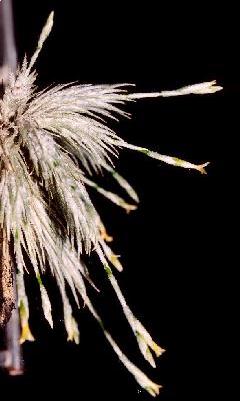
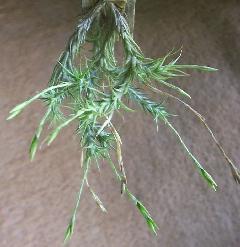
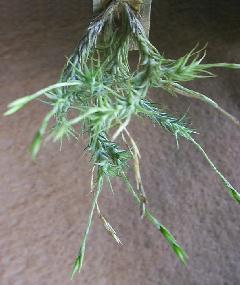
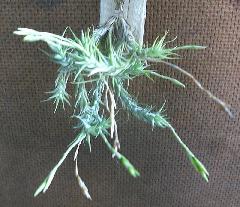
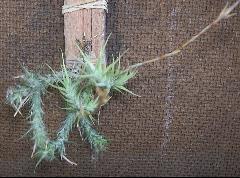
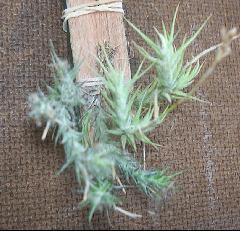
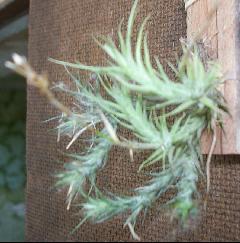
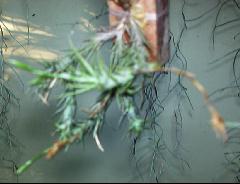
| Ian Hook 11/03, bought at BSA Autumn Show '03, extremely small flower. |
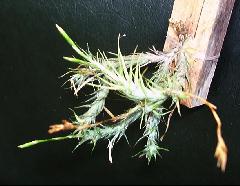
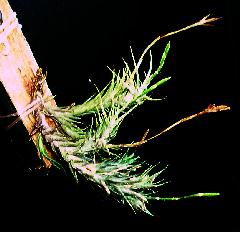
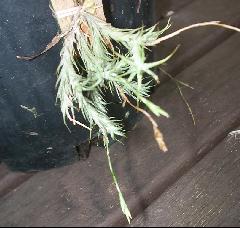
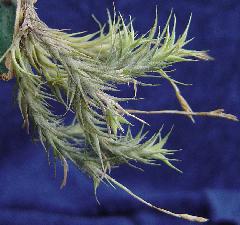
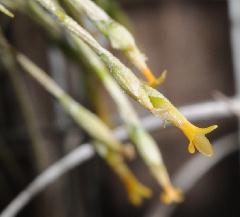
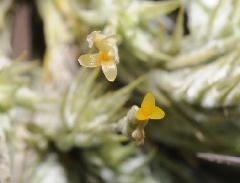
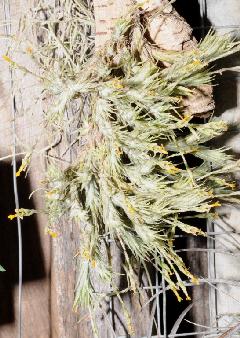
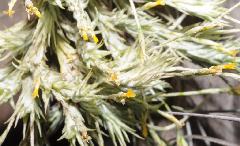
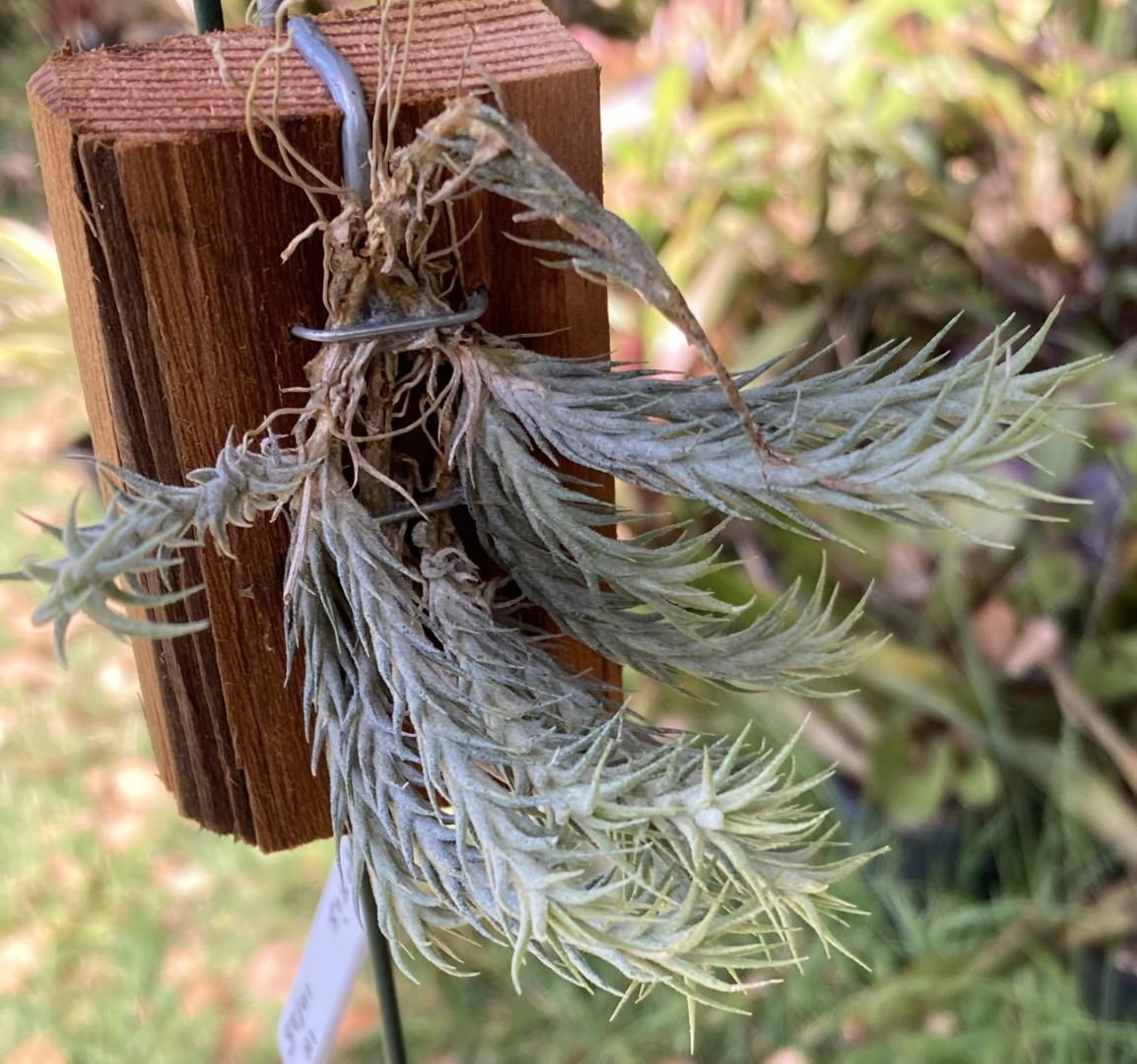
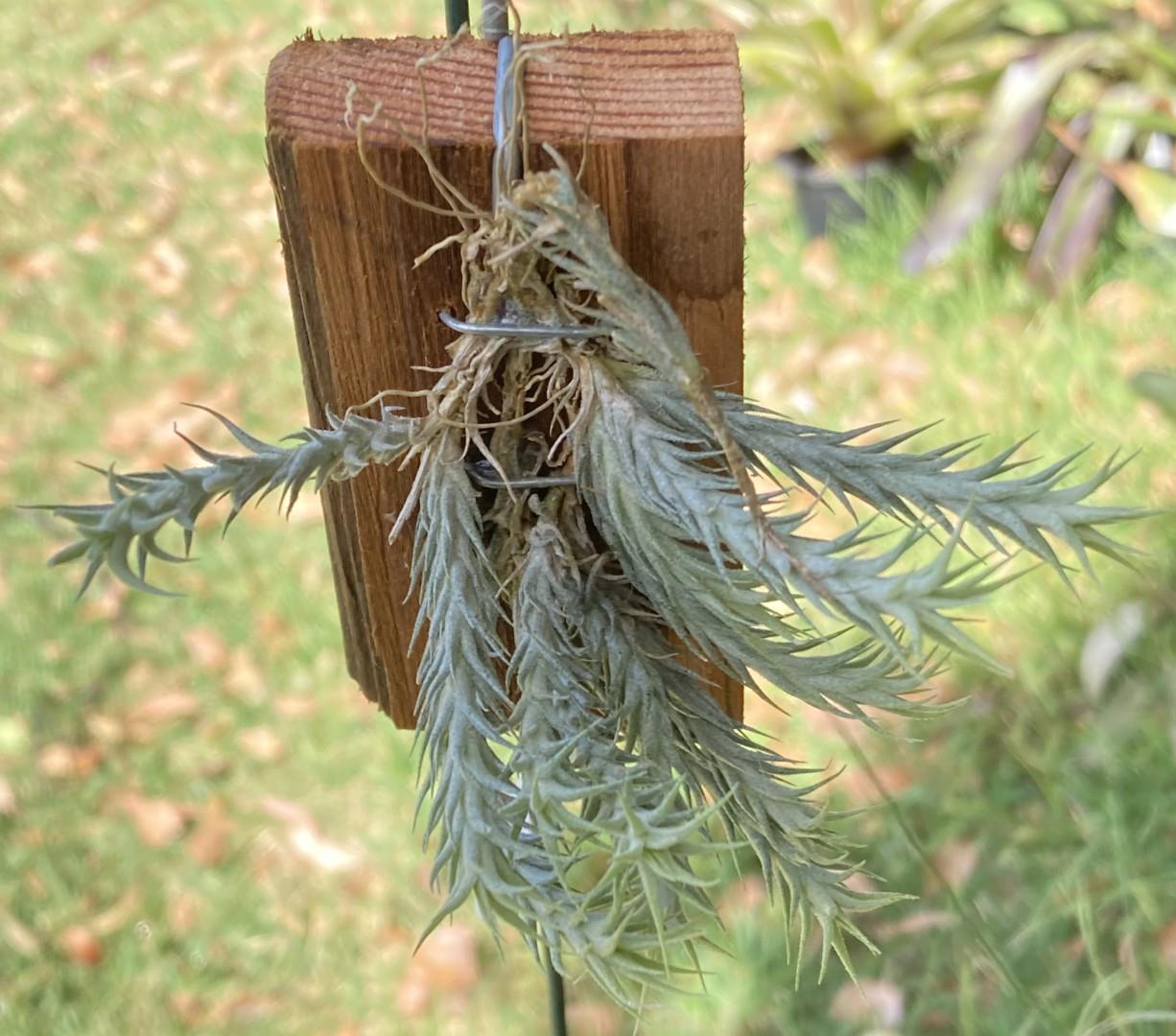
Tillandsia tricholepis var tricho1epis
Tillandsia bryoides Grisebach, Symb. Argent., Gott. Abh. 24: 334. 1879; in part, not as to type.
Tillandsia polytrichoides E. Morren, Belg. Hortic. 30: 240. 1880. Type. Without exact locality, Brazil, Glaziou 66 (K as Morren Icon, GH photo).
Tillandsia tricholepis var argentea Hassler, Ann. Conserv. & Jard. Bot. Geneve 20: 334. 1919. Upper Rio Apa, Paraguay, Hassler 8517 (G? n v).
Leaves not over 15 mm long;
Plant short-caulescent.
Type. Mandon 1179 e p (holotype K, GH photo, isotypes BM, NY, P, S), Poquerani, San Pedro near Sorata, Larecaja, La Paz, Bolivia, 1858-59.
DISTRIBUTION. Epiphytic and saxicolous in humid to semiarid habitats, from near sea level to 2500 m alt, Bolivia, Brazil, Paraguay, Argentina.
Tillandsia tricholepis var macrophylla L. B. Smith, Lilloa 14: 98,fig. 17. 1948.
Treated by Gouda as a synonym of T. spiralipetala in JBS 36: 165-66, 177 (1986) but Till and Hromradnik want it retained for the yellow petalled plant from Bolivia – see below)
Leaves to 50 mm long;
Plant becoming elongate and much branched.
Type. Buchtien 1270 (holotype US), Charopampa near Mapiri, 15deg S, Larecaja, La Paz, Bolivia, Nov 1907.
DISTRIBUTION. Epiphytic in subtropical region, 570-1100 m alt, Peru, Bolivia.
PERU. Without exact locality, Mathews 18 (BM). BOLIVIA. LA PAZ, Nor Yungas: Polo-Polo, Coroico, 1912, Buchtien 4541 (US).
From: Dr. Walter Till. To: Derek Butcher. Subject: Tillandsia spiralipetala
18/01/2000
Dear Derek: This is the true Tillandsia tricholepis var. macrophylla. The plant is not common but rather widespread in Bolivia. I collected it myself at least at two different places during my 1982 trip.
When Eric described T. spiralipetala he took the type of Tillandsia tricholepis var. macrophylla as the nomenclatoric basis but added a photograph of a plant from Central Peru with coffee brown petals. To my knowledge, all Bolivian plants of this alliance flower yellow and the Peruvian flower coffee brown.
Perhaps it is reasonable to separate the Peruvian plants as var. brunnea. Best regards, Walter
From: Derek Butcher. To: Eric Gouda, Len Colgin, Dr Walter Till. Subject: Challenges
In July 1995 I got two plants from Lieselotte Hromradnik as T. tricholepis v. macrophylla. Both plants looked similar to T. loliacea in plant habit and were in line with Eric's move in treating this plant as a synonym of his T. spiralipetala. I tentatively changed my labels.The vegetative habit did not relate to Smith's meagre description of the variety which says that "plant becoming elongate and much branched".
The first plant flowered a few weeks ago and the petals were yellow. Walter has suggested that this is the Bolivian form of T. tricholepis v. macrophylla compared to the brown petalled Peruvian form (now called T. spiralipetala).
My second plant from Lieselotte has just flowered and it is brown as the photo shows. Len tells me that Lieselotte has hundreds of Tillandsias everywhere. I now wonder whether she sent me a Peruvian collection AND a Bolivian collection at my request for two T. tricholepis v. macrophylla. Or is Eric right in suggesting that plants that look like loliacea but flower like T. tricholepis are in fact T. spiralipetala.
If only Lieselotte were on Email! Derek
From: Eric Gouda. To: Derek Butcher. Subject: Re: T. spiralipetala 2
25/1/2000
Derek: The problem with this is that many robust looking T. tricholepis especially from Bolivia were identified as T. var. macrophylla and I'm afraid that the description by Lyman is based on these and the type (Buchtien). We have found very robust T. tricholepis specimen, but all have died.
The type of T. tricholepis v. macrophylla is the type of T. spiralipetala, so any form of this is T. spiralipetala (I did not like to call it T. macrophylla, you will understand why).
There is no difference in brown or yellow colored specimen, except for the color, which occurs in many species of this group.
T. spiralipetala is very variable and can be very robust with leaves to over 4 cm long but I never saw a long caulescent one. The petals often are relatively longer and narrower than that of T. tricholepis and T. loliacea and twisting (which is not very clear in your picture). Some specimen resembles T. loliacea and vice versa. From herbarium specimen it is sometimes difficult to tell whether it is T. loliacea or T. spiralipetala, but most of the time it is very clear.
For me, it would be very interesting to visit Lieselotte in time to come, hope I will be in the neighborhood soon. Eric